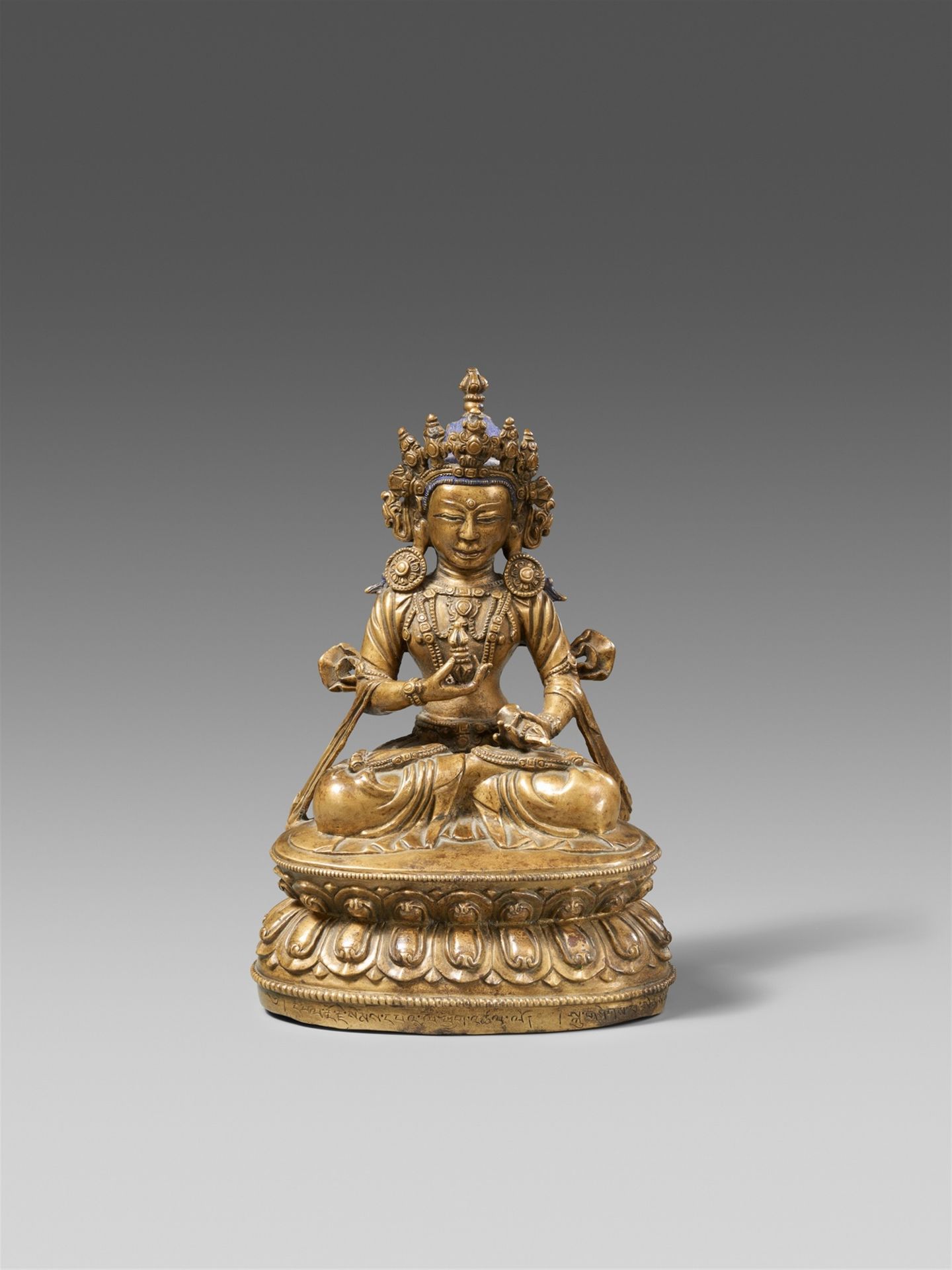Description
An important Tibetan bronze figure of Vajrasattva with inscription to the base. 15th/16th century The finely cast Buddha Vajrasattva is adorned with a meticulous rendering of jewels and luxurious garments, seated on a double-lotus throne of crisp lotus petals that continue seamlessly in the round. With a lengthy Tibetan inscription around the foot of the base. The base sealed and incised with a double-vajra. The stylistic features of the present figure pay clear homage to Yongle Buddhist bronzes that started to arrive in Tibet by the second decade of the 15th century. Included among diplomatic gifts to major monastic enclaves in Central Tibet, flawlessly cast Yongle bronzes inspired emulation among Tibetan artists, often working in a local preference for non-gilded bronze, for which the present lot is a consummate example. Note the similarity between the present lot and a Yongle bronzes of Vajrasattva published in: Ulrich von Schroeder, Indo-Tibetan Bronzes, Hong Kong 1981, p. 516, no.144A. Not intended as outright copies, these Tibetan emulations typically exhibit local adaptations of some features, such as the face of the present figure which has a typical Tibetan tapered outline and Tibetan features. Other examples of Tibetan emulations that show similar adaption include a Vajradhara sold at Sotheby's, New York, 22 March 2018, lot 1045; a Syamatara illustrated in: Ulrich von Schroeder, Indo-Tibetan Bronzes, Hong Kong 1981, p. 477, no.132D. Height 18.6 cm Provenance Private property, Southern Germany
36
An important Tibetan bronze figure of Vajrasattva with inscription to the base. 15th/16th century The finely cast Buddha Vajrasattva is adorned with a meticulous rendering of jewels and luxurious garments, seated on a double-lotus throne of crisp lotus petals that continue seamlessly in the round. With a lengthy Tibetan inscription around the foot of the base. The base sealed and incised with a double-vajra. The stylistic features of the present figure pay clear homage to Yongle Buddhist bronzes that started to arrive in Tibet by the second decade of the 15th century. Included among diplomatic gifts to major monastic enclaves in Central Tibet, flawlessly cast Yongle bronzes inspired emulation among Tibetan artists, often working in a local preference for non-gilded bronze, for which the present lot is a consummate example. Note the similarity between the present lot and a Yongle bronzes of Vajrasattva published in: Ulrich von Schroeder, Indo-Tibetan Bronzes, Hong Kong 1981, p. 516, no.144A. Not intended as outright copies, these Tibetan emulations typically exhibit local adaptations of some features, such as the face of the present figure which has a typical Tibetan tapered outline and Tibetan features. Other examples of Tibetan emulations that show similar adaption include a Vajradhara sold at Sotheby's, New York, 22 March 2018, lot 1045; a Syamatara illustrated in: Ulrich von Schroeder, Indo-Tibetan Bronzes, Hong Kong 1981, p. 477, no.132D. Height 18.6 cm Provenance Private property, Southern Germany
